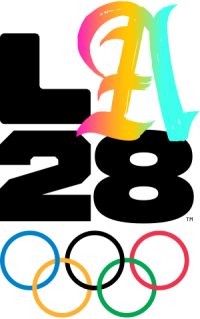HiLo Scores Proposal Dropped by FEI, To Be Tested With Other Ideas in 2018
8 years ago StraightArrow Comments Off on HiLo Scores Proposal Dropped by FEI, To Be Tested With Other Ideas in 2018

Nov. 20, 2017
By KENNETH J. BRADDICK
A controversial proposal to drop the highest and lowest scores in dressage competitions was withdrawn by the International Equestrian Federation (FEI) Monday, and the governing body of horse sports will look at testing the idea and other changes next year.
The proposal the FEI wanted implemented in 2018 has drawn opposition from an overwhelming majority of dressage nations, many top riders, judges and show organizers. It was on the agenda for a vote Tuesday at the FEI General Assembly–the ultimate decision-making body for international horse sports–in Montevideo, Uruguay.
“We have listened to you and we will withdraw HiLo and test it first in 2018 at all levels,” said FEI Dressage Committee Chair Frank Kemperman at Monday’s meeting. “We will then have an independent panel to analyze the results of the testing.”
The proposal had been drawn up by a Dressage Judges Working Group that admitted an analysis of almost 1,000 results showed there were only minor changes in scores.
The working group proposal won support from a handful of nations that included the Netherlands and Italy, the international trainers and riders clubs and the FEI Dressage Committee. The FEI made it clear it wanted the proposal to deflect attention from disparities in scores awarded by judges.
However, it was also divisive with many riders and judges saying it would lead to mediocre judging as no member of a ground jury would want their scores dropped. So they would be unwilling to give high or low scores, a reflection of the views of 1976 Olympic gymnast great Nadia Comăneci of Romania who has lamented that changes in scoring in that sport made scores of “10” less likely no matter how good the performance.
Most detractors of the HiLo proposal suggested more emphasis on education of judges and imposition of penalties in some cases such as nationalistic bias.
The United States gave one of the most succinct reactions: “US Equestrian obtained feedback on this proposal from our various stakeholders including many of our top athletes. The proposal is not supported as it is not addressing the issue but seeking to cover it up.”
Among the proposals that may be tested in 2018, the FEI said, included ideas from Italy and Norway.
Norway suggested that for ground juries of five or more judges–pretty much all CDIs at 3* and above–if a judge’s final score for a horse/athlete combination varies above or below by five per cent or more from the average of the scores of the other judges that particular score will be changed to the same as the next closest score.
Italy supported HiLo: “The adoption of this new tool is in accordance with the paramount principle that the judges panel are a TEAM and therefore the opinion of most of the team should always prevail even in the rare and theoretical case of one judge being right and all the others wrong.”
The official FEI recommendation to be decided by this general assembly was: Adopt HiLoDrop scoring per movement for all FEI dressage competitions, with the exception of Young Horse events and for all juries with three judges.”
The Dressage Judging working Group comprised Frank Kemperman; Maribel Alonso de Quinzaños, a 5* judge from Mexico; Kyra Kyrklund, five-time Olympian for Finland and president of the International Dressage Riders Club; Richard Davison, a four-time Olympian for Great Britain and David Stickland, a consultant to the FEI analyzing dressage judging.
The group’s proposal:
“In HiLoDrop the highest and lowest scores awarded by the judges for each movement in the test are not taken into account and the average score for that figure is formed from the remaining scores. The final score awarded to the rider and horse is formed by the coefficient weighted sum of this score for all the movements. Each judge’s score sheet is unaffected by this process and the final scores per judges form part of the record of the event. Such a system is widely used in other Olympic-judged disciplines and also in other equestrian-judged sports.
“Following a detailed analysis of almost 1000 competitions from 2017 it is shown that the average effect on final scores is a shift of +0.1% with a spread (standard deviation) of 0.2%. In fact only 3% of all GP/GPS results would change by more than 0.5%–in almost every case a small upwards change. The correlation of the HiLoDrop score and the score from the current system is perfectly linear. While the changes are almost invisible for the vast majority of cases in a few cases an important correction would be made; HiLoDrop ensures that the consensus view of the jury predominates in the final result and is not unduly influenced by one judge being exceptionally high or low for whatever reason. The DJWG recognizes that in some circumstances that judge may have been more correct were a detailed re-examination of each movement carried out, but believes that the consensus result is the one that should go forward to the eventual ranking. All movement scores from all judges will go forward to the official record and be communicated to the rider in the normal way.”

